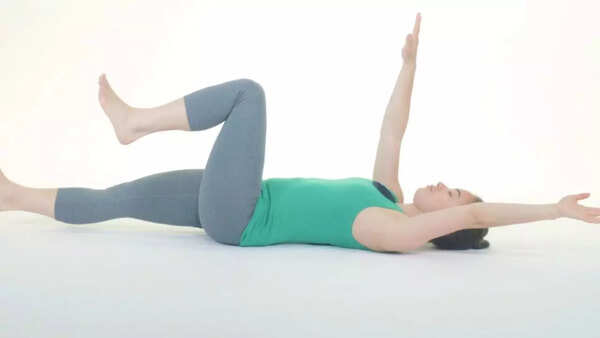What begins as a minor ache after a long day at your desk or a slight twinge during exercise can escalate into a debilitating condition. The global prevalence of lower back pain is a growing concern. The World Health Organization reports that approximately 619 million people currently experience lower back pain, a number projected to reach 843 million by 2050. This alarming statistic positions back pain as the most prevalent musculoskeletal disorder worldwide and a leading cause of disability, affecting individuals of all ages, genders, and lifestyles. It significantly impacts work, relationships, sleep, and daily routines.
While many factors contribute to back pain, modern lifestyle habits, particularly poor posture, are major contributors. Kacey Russell, a personal trainer at The Fitness Group, emphasizes the risks associated with prolonged sitting, slouching on sofas, working from bed, or maintaining static positions for extended periods. As highlighted by The Sun, maintaining a straight back is crucial, but remaining in any single position for too long can negatively impact your back.
A report by the Royal Society for Public Health supports this, revealing that nearly half of remote workers who utilize sofas or beds for work develop musculoskeletal issues. This trend is especially concerning as flexible work arrangements become increasingly common.

Regular exercise doesn't guarantee protection from back pain. Overtraining or neglecting essential steps like stretching can be detrimental. Russell cautions that warming up and cooling down are not optional, but essential for preventing muscle stiffness and injury. Runners, weightlifters, and endurance athletes may experience lower back tightness or chronic soreness if they overlook proper technique or recovery routines.
However, not all back pain stems from posture and movement issues. Nerve conditions such as sciatica, previous injuries, or chronic stress can also be underlying factors. Russell advises individuals to pay attention to their bodies and consult a general practitioner if pain persists for more than a few weeks despite rest and basic care, or if it interferes with daily activities. Ignoring persistent symptoms could result in worsening conditions or delayed treatment of serious underlying issues.
If back pain is a regular part of your day, incorporating low-impact exercises can alleviate stiffness and improve mobility. Russell recommends incorporating these expert-approved exercises into your daily routine to support spinal health and flexibility.

Lie flat on your back with knees bent and feet hip-width apart. Press your feet into the floor and lift your hips toward the ceiling, squeezing your glutes. Hold for 10–15 seconds and slowly lower. Repeat several times.

Begin on all fours, then extend your left leg behind you and right arm forward. Keep both limbs aligned with your body. Hold for 10–15 seconds, then switch sides.

Starting on all fours, inhale while arching your back (cow), lifting your tailbone and gaze. Exhale while rounding your spine and tucking your chin (cat). Repeat the flow for 15 seconds.

Lie on your back with arms reaching upward and knees bent at 90 degrees. Slowly extend your left arm back and right leg forward. Hover just above the floor, return to start, and alternate sides.
These exercises can target the core, release tension, and improve posture, which are all crucial for managing and preventing back discomfort.
While rest is a common response to pain, complete inactivity can be counterproductive when it comes to lower back issues. Russell suggests that movement like walking or swimming can help relax tight muscles. However, she advises against high-impact workouts or heavy lifting without a proper warm-up. It's important to consult a medical professional for sharp, sudden, or immobilizing pain.
Whether you work remotely, are an avid fitness enthusiast, or simply experience more stiffness in the mornings, your body might be signaling an issue. With projections indicating that 843 million people will suffer from lower back pain by 2050, awareness, intentional movement, and posture correction are critical.
By paying attention to these signals and adjusting your habits, you can alleviate current discomfort and prevent chronic pain in the future.
Newer articles
Older articles
 Najmul Hossain Shanto Resigns as Bangladesh Test Captain Following Sri Lanka Defeat
Najmul Hossain Shanto Resigns as Bangladesh Test Captain Following Sri Lanka Defeat
 Gavaskar Calls for Kuldeep Yadav's Inclusion in 2nd Test Amid Bumrah Fitness Concerns
Gavaskar Calls for Kuldeep Yadav's Inclusion in 2nd Test Amid Bumrah Fitness Concerns
 Prasidh Krishna Targets Sharper Bowling Lengths, Aims to Curb Run Rate
Prasidh Krishna Targets Sharper Bowling Lengths, Aims to Curb Run Rate
 Black Caps Set for Action-Packed Home Summer Against Cricket Heavyweights
Black Caps Set for Action-Packed Home Summer Against Cricket Heavyweights
 Rishabh Pant Is Revolutionizing Cricket: Greg Chappell Lauds Unorthodox Genius
Hoặc (tùy chọn):
Greg Chappell: Rishabh Pant's 'Reinvention' of Cricket Is a Sight to Behold
Rishabh Pant Is Revolutionizing Cricket: Greg Chappell Lauds Unorthodox Genius
Hoặc (tùy chọn):
Greg Chappell: Rishabh Pant's 'Reinvention' of Cricket Is a Sight to Behold
 Smith Targets Second Test Return After Unique Baseball Cage Training to Rehab Finger Injury
Smith Targets Second Test Return After Unique Baseball Cage Training to Rehab Finger Injury
 Bangladesh's Shadman Defends Batters After Day 1 Stumbles Against Sri Lanka
Bangladesh's Shadman Defends Batters After Day 1 Stumbles Against Sri Lanka
 Expert Tips: How to Help Your Child Beat Distractions and Improve Focus
Expert Tips: How to Help Your Child Beat Distractions and Improve Focus
 Samsung Galaxy A35 5G and A55 5G: Full Specs and Pricing Revealed
Samsung Galaxy A35 5G and A55 5G: Full Specs and Pricing Revealed
 Sharpen Your Focus: Can You Decipher This Optical Illusion in Seconds?
Sharpen Your Focus: Can You Decipher This Optical Illusion in Seconds?